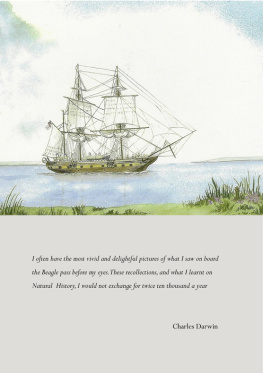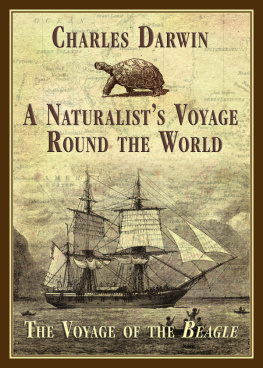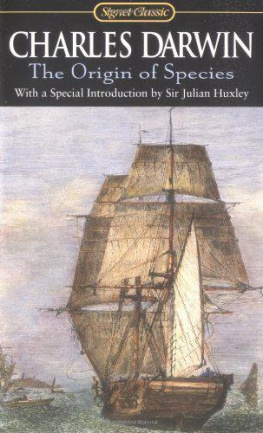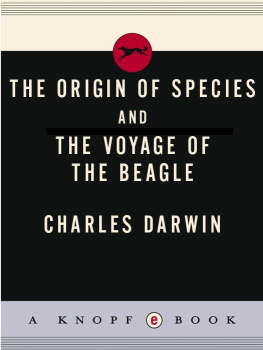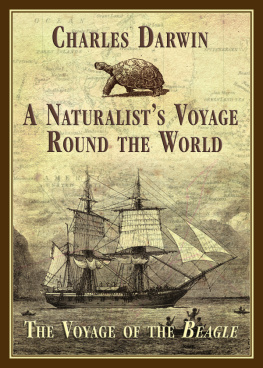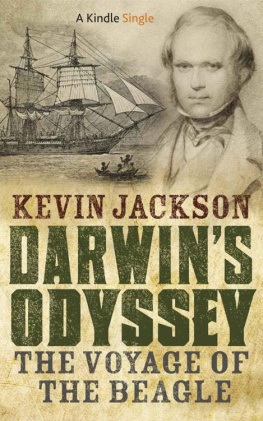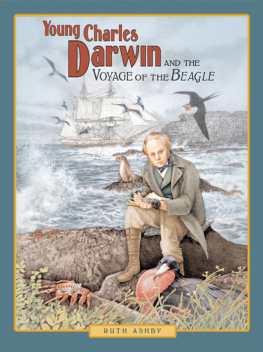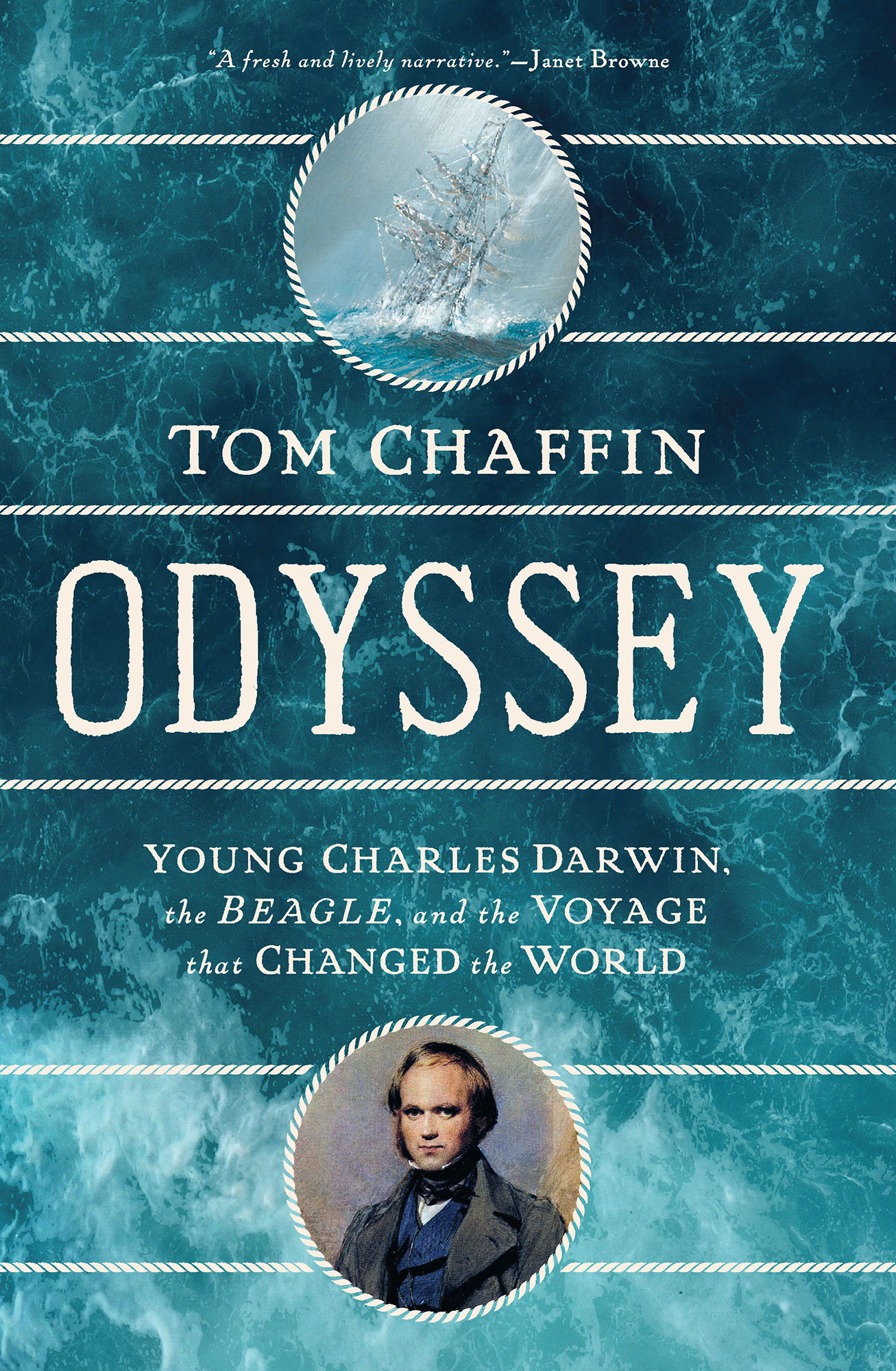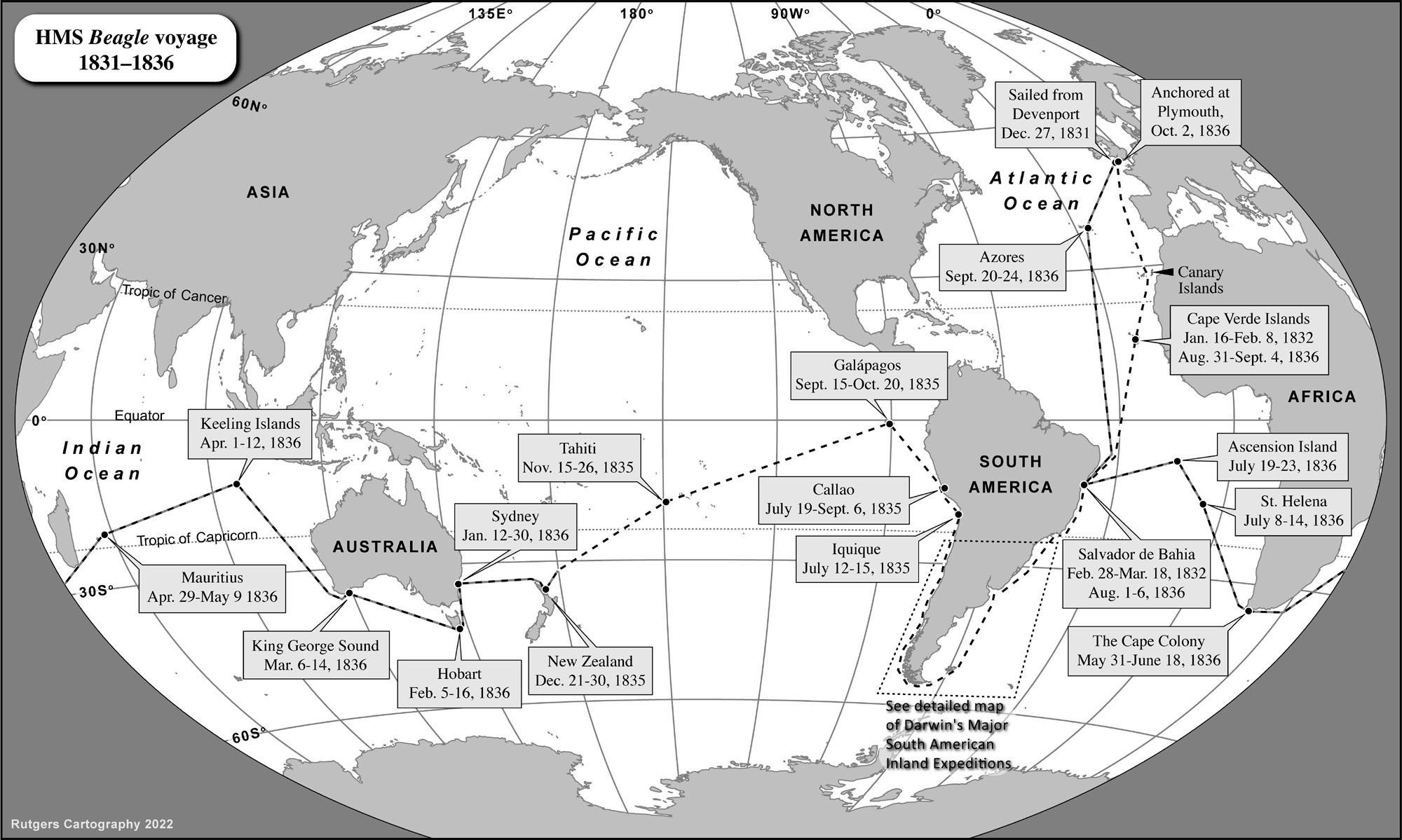Contents
Guide
"A fresh and lively narrative." -Janet Browne
Tom Chaffin
Odyssey
Young Charles Darwin, The Beagle, and The Voyage that Changed the World
ALSO BY TOM CHAFFIN
Revolutionary Brothers: Thomas Jefferson, the Marquis de Lafayette, and the Friendship that Helped Forge Two Nations (2019)
Giants Causeway: Frederick Douglasss Irish Odyssey and the Making of an American Visionary (2014)
Met His Every Goal? James K. Polk and the Legends of Manifest Destiny (2014)
The H. L. Hunley: The Secret Hope of the Confederacy (2008)
Sea of Gray: The Around-the-World Odyssey of the Confederate Raider Shenandoah (2006)
Pathfinder: John Charles Frmont and the Course of American Empire (2002)
Fatal Glory: Narciso Lpez and the First Clandestine U.S. War against Cuba (1996)
ODYSSEY
Pegasus Books, Ltd.
148 West 37th Street, 13th Floor
New York, NY 10018
Copyright 2022 by Tom Chaffin
First Pegasus Books cloth edition February 2022
Interior design by Maria Fernandez
Jackect design: Brock Book Design Co., Charles Brock
Jacket imagery: Adobe Stock, Deposit Photos
HMS Beagle in Storm off Cape Horn 24th December 1832. 2012
Portrait of Charles Darwin by George Richmond
Author photo credit: Meta Larsson
All rights reserved. No part of this book may be reproduced in whole or in part without written permission from the publisher, except by reviewers who may quote brief excerpts in connection with a review in a newspaper, magazine, or electronic publication; nor may any part of this book be reproduced, stored in a retrieval system, or transmitted in any form or by any means electronic, mechanical, photocopying, recording, or other, without written permission from the publisher.
ISBN: 978-1-64313-908-1
Ebook ISBN: 978-1-64313-907-4
Distributed by Simon & Schuster
www.pegasusbooks.com
To Lesly Gonzlez Herrera
grace under pressure
I dont know anything that has gone higher than Darwinthe noble, the exalting; Darwin is to me science incarnate; its spirit is Darwin.
Walt Whitman, August 29, 1891
HMS BEAGLES TIERRA DEL FUEGO
INTRODUCTION HIDING IN PLAIN SIGHT
There was nowhere to go but everywhere,
and keep on rolling under the stars the western stars.
Jack Kerouac, On the Road (draft)
I n Victorian-era photographs, Charles Darwin, with Isaac Newton and Albert Einstein, arguably among the worlds three most famous scientists, peers at us from behind the bushy white Old Testamentprophet beard by which the world has come to know him. In the popular imagination, the older Darwin crowds out the vital younger man whose curiosities, risk-taking, and travels aboard HMS Beagle shaped his later theories.
We have scores of images of the older Darwin, many of them photographs. But we have only two widely-known portraits of him before age thirty, neither of them photographs: the earliest, a chalk portrait at age six, posed with his younger sister; the second, a watercolor that captured the then still cherubic-looking young man in his late twenties.
That paucity of images notwithstanding, without Darwins travels aboard the Beagle, an odyssey freshly chronicled in these pages, he likely would never have formulated his paradigm-shifting theory of evolution. The voyage of the Beagle, he reflected in his later years, has been by far the most important event in my life and has determined my whole career.
By now, Darwins journeys aboard the Beagle feel like familiar history. But how well do we truly know those travels? Readers, for instance, are familiar with how, sailing aboard a British ship called HMS Beagle, he visited the Pacific Oceans remote Galpagos Islands. There, he noticed some interesting tortoises, lizards, and birds. Voila!then and there, accepted lore informs us, his now famous theory burst into the great mans hirsute head.
The Voyage of the Beagle being finis, Darwin returned forthwith to England and wrote On the Origin of Species by Means of Natural Selection. And that book, in turn, not only transformed science, it launched a thousand recriminatory sermons, and cartoons depicting the author as a hairy, slouching ape. Gilbert and Sullivans comic opera Princess Ida, captured the spirit in 1884: Darwinian Man, though well-behaved / At best is only a monkey shaved.
But operas, cartoons, and legends make unreliable emissaries of the past. For starters, Darwin was twenty-two years old when he left England aboard the Beagle and twenty-six when, in 1835, he called at the Galpagos, in the fourth of five years of travels. And those islands proved, for him, initially disappointing, and provided no eureka moment. By contrast, he earlier had adjudged gloomy Tierra del Fuego the journeys most interesting stop. There, he witnessed the repatriation by his shipmates of three Fuegians, Natives of the area kidnapped during an earlier Beagle voyage and brought to England to be Christianized and civilized.
In deference to Robert FitzRoy, the Beagle captain with whom Darwin sailed, his published account of his five years of travels, appearing in 1839, provided only a bare-bones account of the story of the three Fuegians. We staid there five days, he writes of the ships visit, in 1833, to the Tierra del Fuego locale selected as the Natives new home. Captain FitzRoy has given an account of all the interesting events which there happened.
For the most part, Darwin deferred public reflections on the Fuegians and the issues they raised for him until 1871, when he published The Descent of Man. Appearing a dozen years after Origin of Species, that now often overlooked, two-volume work ranks among the most ambitious of his major books. Bringing, for the first time, Homo sapiens into his portrait of the living world, Descent of Man represented a bolder expression than Origin of Species of its authors intellectual vision.
Moreover, during Darwins Beagle travels, Origin of Species, Descent of Manand, for that matter, his patriarchal beardremained decades away. Further undermining the legend, his call in the Galpagos and other (for him) exotic locales belonged to a five-year circumnavigation by a British survey ship, an excursion, in geography and time, of greater breadth than generally assumed.
Puncturing another common assumption, Darwin played no formal role aboard the



